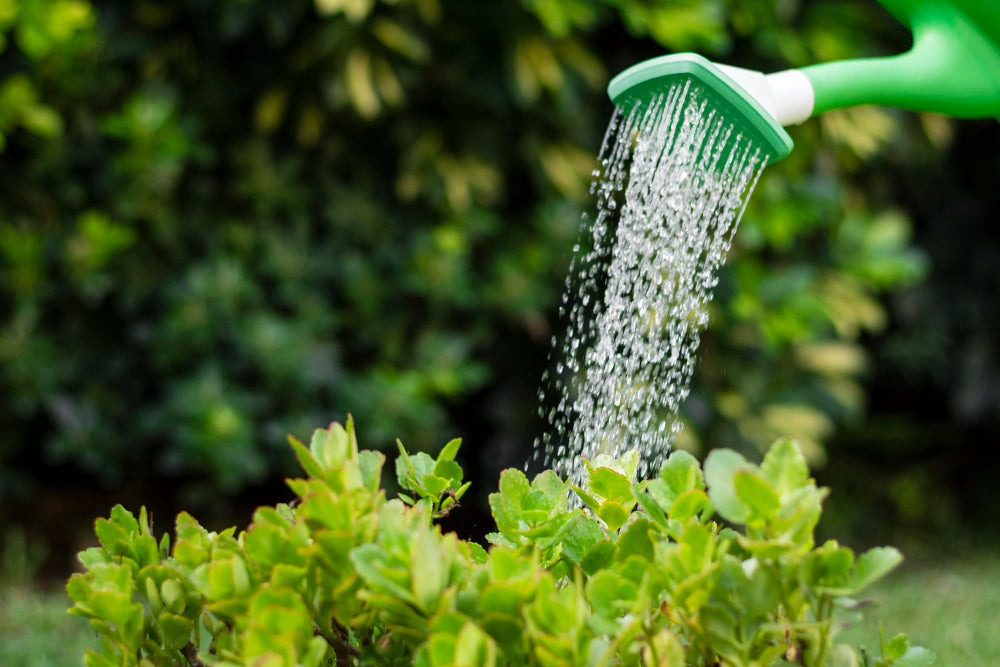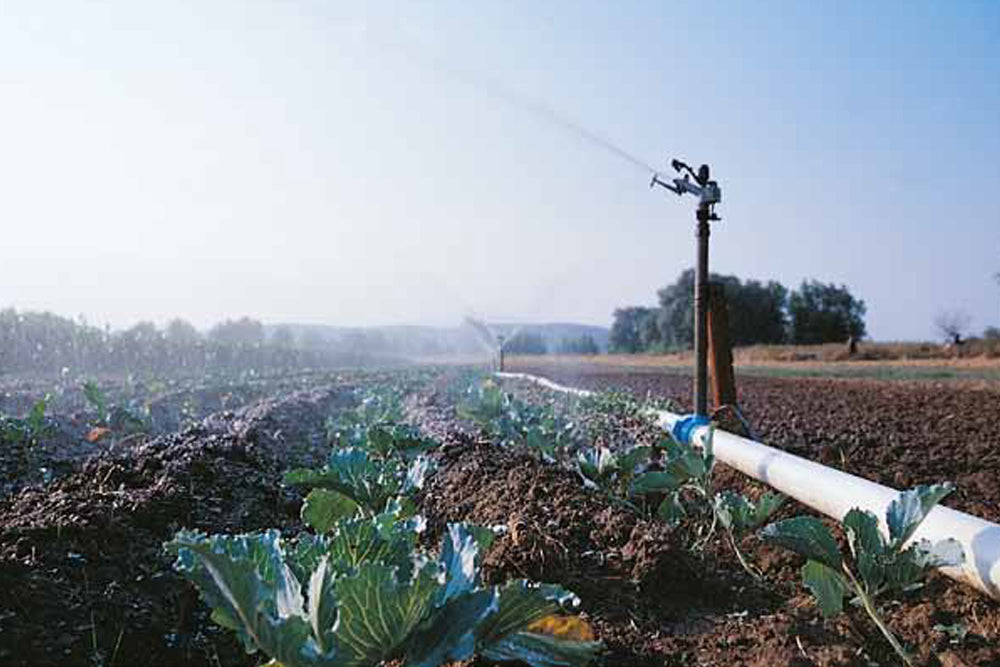Soil Water Plant Relationships

SOIL TYPES
Soil is formed by the interaction of plants, animals, climactic factors and weathered rock. It consists of mineral particles, decaying organic matter, water, air and living organisms. About half of soil is solely pore space; this is the pockets of air that allow roots to move and water to infiltrate. The other half of soil is made up of mineral and organic matter. Organic matter, however, only takes up between one and four percent of the soil s substance.
The majority of soil is a combination of clay, silt, and sand. Since these three elements play such a vital role in the breakdown of soil, soil classifications are determined based on how much of each element is in the soil.
Each of these particles is unique. Sand is the smallest soil particle that can be seen with the naked eye. Because it is loose and single grained, it feels gritty when it is dry or wet. If a handful of sand is squeezed when it is dry, it will crumble as soon as pressure is released. If a handful of sand is squeezed when it is wet, it will form a cast. However, the cast will crumble the instant it is touched. Silt and clay particles are too fine to be seen with the naked eye. Silt feels smooth and floury when it is dry and greasy when it gets wet. Clay is very hard when it is dry and sticky and plastic when it is wet, usually forming extremely hard blocks or prisms when it dries. Clay exhibits properties of both cohesion and adhesion. When these three particles are combined, their characteristics are mixed to produce unique features.
These three elements combine into eight soil types. Along with the different types of soil, there are various soil structures as well. The illustration shows how to identify soil types from the soil texture, and estimate the soil moisture from the look and feel of a soil sample.
INFILTRATION RATE
The textures of the soil dictate several different aspects of the soil in relation to water. The time it takes for soil to accept water, how much water the root zone reservoir will hold, the rate that water moves through the soil, and how much water is available to the plant is all determined by the type of soil. When soil first becomes wet, its infiltration rate is high, and then it lowers in a logarithmic pattern. A coarse sandy soil can take in more water per hour than a clay soil. However, fine textured soil does have more pore space than coarse textured soil, so it can hold more water; the sizes of the pores themselves are smaller in finer soils but there are more pores overall.
Fine textured soils can therefore store more water per meter depth than coarse soils. Soils that contain a lot of sand only have about 42 mm to 83 mm of available water per meter depth, whereas soil that is abundant in silt can have up to 200 mm of water per meter depth.
Infiltration rate is also dependent on the watering pattern, the amount of calcium in the soil, the amount of salt in the soil, tillage, the amount of microorganisms in the soil, and the amount of organic matter in the soil. If water is applied to the soil surface faster than the permeability and infiltration rate of the soil, the soil s surface is susceptible to sealing. This decreases the infiltration rate of the soil, and it can cause ponding. Ponding leads to more problems, such as runoff, fertiliser and pesticide loss, erosion, and an increased possibility for disease.
Another problem that may occur with a soil watering pattern is disturbance in the soil surface structure. If sprinkler irrigation is applied too forcefully (large droplet sizes and high application rates), it will break the surface structure. Also, excess applied irrigation water has a tendency of forming a water table in the root zone of the soil. Water tables bring up salt layers that can harm roots.
Infiltration rates are improved with calcium, organic matter and microorganisms. Water application rates and the total amount of water applied should not be more than the infiltration rate of the soil types and the water holding capacity of the soil to the depth of irrigation desired. A balance of solids, water and air should be present in the soil.

The soil is the water storage area from where the roots take up water. It acts like a sponge and is similarly limited as to how much water it can hold. Once the soil is at field capacity, water runs through it like a sponge that can no longer hold any additional water.
Different types of soils hold different amounts of water and therefore a balance between the solids, water and air in the
soil needs to be maintained. Fundamentally, this balance is about 50% solids, 25% water and 25% air. The key is to irrigate up to field capacity and avoid saturation where you have no air. And you want to avoid getting to a wilting point where the roots can no longer remove water from the soil surface. The length of time between irrigations and the amount that can be applied is based on the soil type and the depth of the plant roots.
Tillage can improve the infiltration rate of soil by breaking up the sealed soil. However, if a field is tilled too often with the same repeated pattern, plow pans can form underneath the surface of the soil. The soil that makes up the plow pans is pressed together harder than the soil on top and the overall infiltration rate of the soil is reduced.
Finally, too much salt in soil poses a threat to plants. The only way that plants are able to pull water out of soil is by having a higher solute concentration than the concentration of salts in the water, because the water moves through the plant roots due to osmotic pressure. Too much salt will slow down and can maybe even stop the intake of water through the plant s roots. One other thing that may be a concern when dealing with infiltration rates is the amount of fragments on top of a field. Things such as leaves and weeds may block the pores of the soil, and water will not be able to enter the soil efficiently.
Levels of moisture contents of a field depend on the amount of water that has infiltrated in the soil. When a soil is too dry, plants begin to wilt. If they do not get water over a period of time, they enter permanent wilting and cannot be brought back to health.
An experienced farmer can determine the soil s moisture level by the feel of the soil, and devices are available that can measure the soil moisture.
When soil moisture sensors are used, they need to be placed in a field strategically. If they are placed in an unusually wet or dry area of the field, it will give an inaccurate reading. This can lead to either the overwatering or under watering of a field.
WATER QUALITY AND TREATMENT
Irrigation water usually comes from a stream, lake, river, canal, or groundwater well. It is very likely that the quality of water being pumped in is not very good, because natural water sources are susceptible to dirt, animal waste, and other fragments. Water can have other problems, such as an irregular pH level. Test the water that is to be used to irrigate your crops and treat the water as required to reduce any water quality issues, so your crops are provided with the quality of water needed for optimum growth.
These water issues need to be dealt with before the water is pumped onto a field. Water can be treated by means of filtra- tion, pH control, and chemigation/fertigation. Chemigation and fertigation is an increasingly important component in an irrigation system, not least because of environmental issues. Each water treatment system is specific to the needs of a field and/or the crop requirements.
SOIL MOISTURE MEASURING DEVICES
Granular Matrix Sensors: Measure the electric resistance or capacitance of the sensor that is in contact with the soil.
Electric Resistance Blocks: Measure the resistance or conductivity between the blocks that are buried in the ground.
Tensiometers: Measure the vacuum that plant roots exert on the soil in contact with the device
Other types are Time Domain Reflectometry, Frequency Domain Reflectometry, or Neutron Probes
PLANT RELATIONSHIPS
With all this discussion about water, it is natural to wonder why water is so important to a crop, and how crops develop. In order to understand this, it is necessary to know how a plant works. Plants absorb water through their root hairs, by means of osmosis. Root hairs grow according to their environmental conditions and move through pore space to absorb water. Water is constantly being absorbed by a plant, to satisfy the deficit of water that evaporates off of the plant s leaves. Water normally moves from the soil through the semipermiable walls of the plant root s cells. It then goes up the xylem tissues to the leaves. It is released to the atmosphere through the leaf cells called stomata. When the stomata discharge water, they absorb CO2 at the same time. The reason why all of this takes place is so the plant can perform photosynthesis, which is the process that plants go through to make their energy.
Transpiration:
The rate that water evaporates off the plant s leaves
Evaporation:
The rate that water evaporates from the soil
Evapotranspiration:
The movement of water from plant leaves and soil
If the roots are not bringing in enough water and the plants internal pressure is not adequate, the plants may wilt. Depending on the crop, stress is necessary at certain times, can be tolerated at certain times, or should always be avoided. A farmer should always water his crop according to its water needs and degree of stress.
The rate that water evaporates off of the plant’s leaves is called transpiration. This dictates how much water is absorbed from the soil. When this is combined with the rate that water evaporates from the soil, evaporation, a farmer will be able to know how much water he needs for his crops. This movement of water from plant leaves and soil is called evapotranspiration.
Different crops have differing water needs. Some require more water at certain growth stages. Also, some crops can be irrigated by means of deficit irrigation, while others would suffer when that technique is applied. There are a number of plants that have the ability to angle their leaves, to regulate their own transpiration as well. Moreover, a plant’s ability to intake water depends on their root zone; roots grow best when soil has sufficient moisture but is not saturated, air is adequate for respiration and microbial activity is high. Thus, it is important for a farmer to make the field conditions ideal for the crop.
OTHER WATER ISSUES
There are of course environmental issues with irrigation of which every grower should be aware, such as waterlogging, salinisation, deep drainage, and backflow. Waterlogging is
caused when too much water enters the root zone, causing plants to shut down and delay growth until some of the water drains. Salinisation can occur when there is a lack of sub-surface drainage; leaching of salt from soil may be restricted, meaning the soil will have too much salt for a plant to grow. Deep drainage is what happens when water drains and moves below the root zone. This brings salt up to the soil in areas where there
is a saline level, and it also raises the water table. Backflow occurs when irrigation water and/or chemicals contaminate the water supply. This can be averted with a backflow preventing device that is capable of shutting down the system if any backflow happens. Overall, all of these problems can be avoided if an irrigation schedule satisfactory for the field is followed. Finally, drainage of irrigated fields is almost as important as the irrigation system and application of water.
There is an obvious intricate connection between the soil, water, and plant growth. If the smallest thing is wrong with either soil or water, the crops can suffer tremendously. It is therefore necessary to be tuned in with the way a crop grows and its needs. Equipment, labor, and watering schedules need to be chosen carefully and kept up regularly to ensure a crop gets the care that is needed to produce a plentiful yield.


